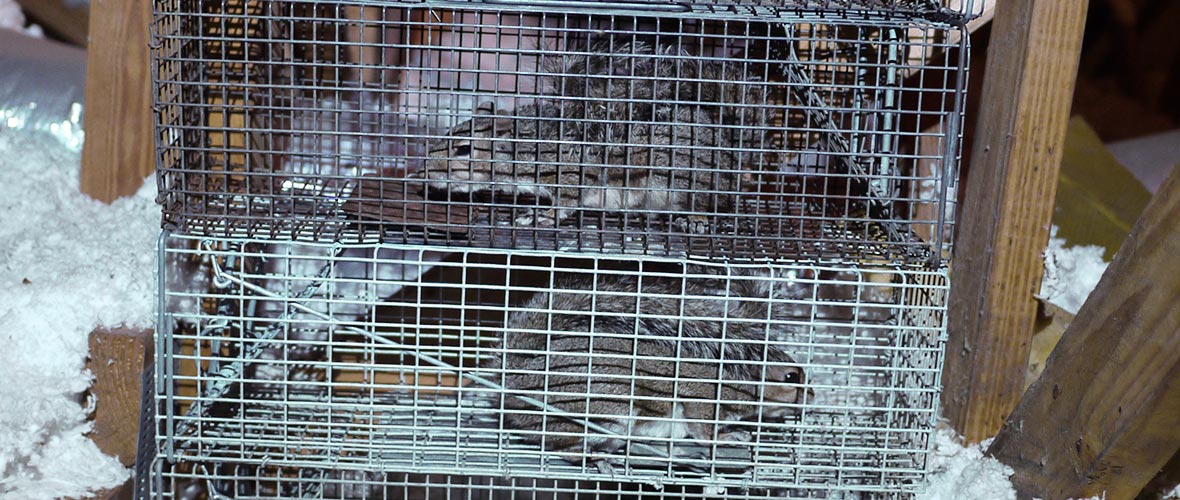How to Remove Squirrels From Attic Yourself
Do-It-Yourself Home Remedies to Get Rid of Squirrels: If squirrels in the attic are the problem, the proper way of getting rid of them comes down to a couple of straightforward steps:
1. Inspect the house in order to identify any possible squirrel access points.
2. Seal all points of entry with heavy steel mesh, leaving only the main access hole open.
3. Install a one-way exclusion door on the main access hole.
I will discuss this in more detail below.
Squirrels tend to nest in attics, and will usually give birth twice a year, in late summer/early autumn, and in late winter/early spring. This is usually when homeowners complain about squirrel activity in the attic. Squirrels are pretty spectacular, but having one in your attic raising its young can be very annoying. Additionally, they represent a possible fire hazard due to their chewing habits, especially in the attic where chewed electrical wires can easily cause short circuits. They can also destroy your garden if given the chance, especially during springtime. So, although you might like squirrels and are used to seeing them outdoors, even in your yard or garden, having them inside is never good news.

For all the silly home remedies to get rid of squirrels that are out there, we can only vouch for one of them. And that’s hot sauce. Extremely spicy hot sauce. Wherever you’ve noticed signs of a squirrel chewing through or on something, you can smear hot sauce on there. And if the hot sauce is intense enough, it will repel the squirrel. The downside to this home remedy is that it’s not a one-time thing. Although squirrels are territorial, new individuals will always appear, and you can’t keep them from getting the same ideas as their forerunners. Squirrels chewing on vegetation in the garden could be dealt with in the same way. As an alternative, you can use proper fencing to secure your garden.
Squirrels are big fans of birdfeeders, so there’s a chance that might be your problem. As squirrels are pretty smart, as well as particularly agile and persistent, your run-of-the-mill squirrel baffle won’t always do the job. It’s important that you don’t hang birdfeeders on tree branches. If the squirrel has no way of getting to the birdfeed other than climbing up the pole, you should isolate the pole with something solid that will add to the pole’s volume so that squirrels can’t wrap their paws around it, and that is dense enough so that squirrels can’t get their claws into it. They will jump on the pole and just slide right down no matter how many times they try.
If squirrels in the attic are the problem, the proper way of getting rid of them comes down to a couple of straightforward steps:
1. Inspect the house in order to identify any possible squirrel access points.
2. Seal all points of entry with heavy steel mesh, leaving only the main access hole open.
3. Install a one-way exclusion door on the main access hole.
Once the squirrel goes through the one-way exclusion door, it can’t go back in. Now you can seal that main access hole as well, and your attic squirrel problem is solved. But be mindful of squirrel maternity season, and don’t risk leaving helpless babies to starve to death in the attic, and a desperate mother squirrel chewing her way back into the attic in order to be with her young. Remember, if the squirrel has installed herself in your attic, it’s almost a certainty that she’s there in the purpose of raising her family. If you spot the squirrel early on, and are sure that she hasn’t given birth yet, you can try and scare her away by spraying raccoon eviction fluid around the access hole, or by making noises that could intimidate the animal. The squirrel may choose to leave and look for a safer nesting environment, but that’s never a guarantee. However, if the squirrel has already given birth, there’s almost no chance for these tactics to work. If the litter already exists, you should wait for the young to become mobile (you’ll start hearing them running around in the attic when they’re about 6 weeks old), and then employ the one-way door exclusion tactic.
Aside from home repair, squirrel-proofing your birdfeeder, and hot sauce, there is something else you can do yourself in order to get rid of invasive squirrels. And, you’ve guessed it, it has to do with food. If you have trees that produce nuts or any other kind of fruit, make sure you never leave fallen fruits piling up on the ground. Keep garbage can lids secured, and preferably indoors. Don’t store or leave pet food outside.
There is no magic home remedy to getting rid of squirrels, as there isn’t any exciting new repellent that actually works, no matter what you may hear or read online on all sorts of unreliable sources. If you’ve heard that any of the following are efficient home remedies to get rid of squirrels, you can just forget about them, and start focusing on what has been discussed in this article: dog hair, human hair, citrus peel, nutmeg, cinnamon, predator urine, moth balls, ammonia, stroboscopic light, high-pitch noise emitting machines, safflower, vinegar, aspirin, cat litter, and the list goes on.
As an active part of the Defenders of Wildlife Network, our main goal is to provide homeowners with pertinent information regarding squirrels and how to deal with them in an efficient and humane manner. We would like you to take advantage of the knowledge we provide, and treat squirrels with compassion and respect, no matter what problems they’re causing. Remember, we intruded on their territory in the first place, and not the other way around.
Go back to the Squirrels in the Attic home page.

